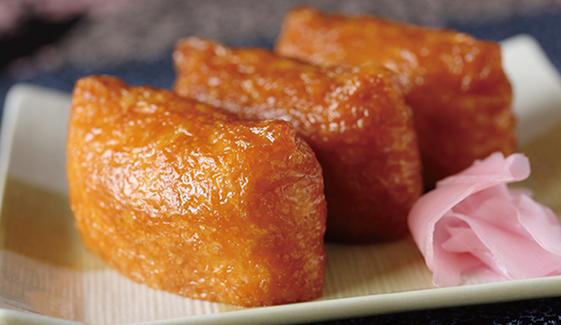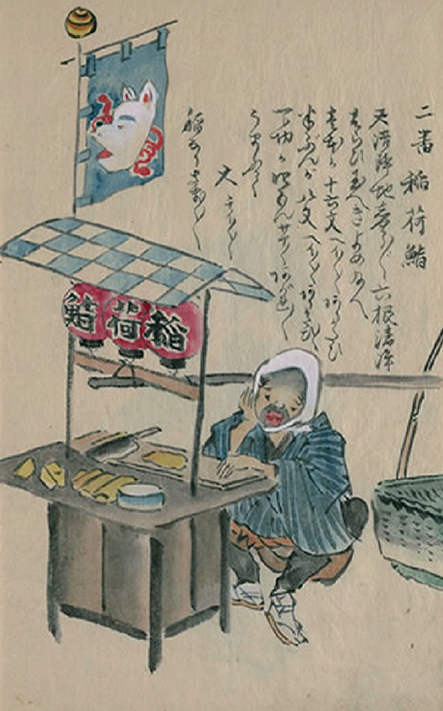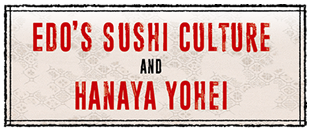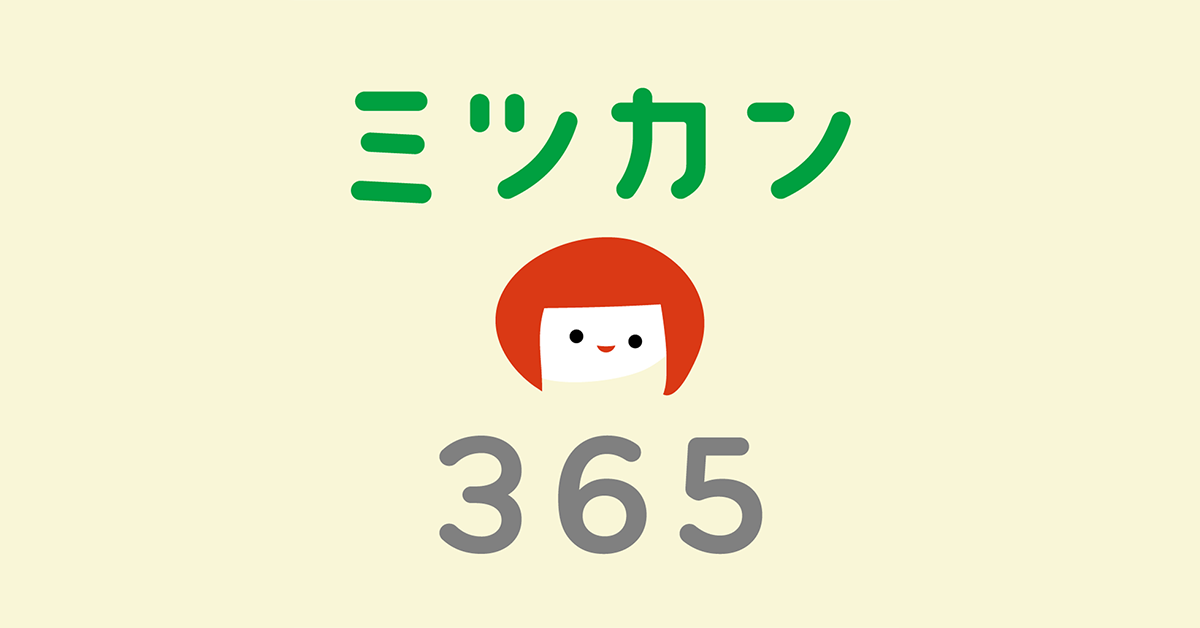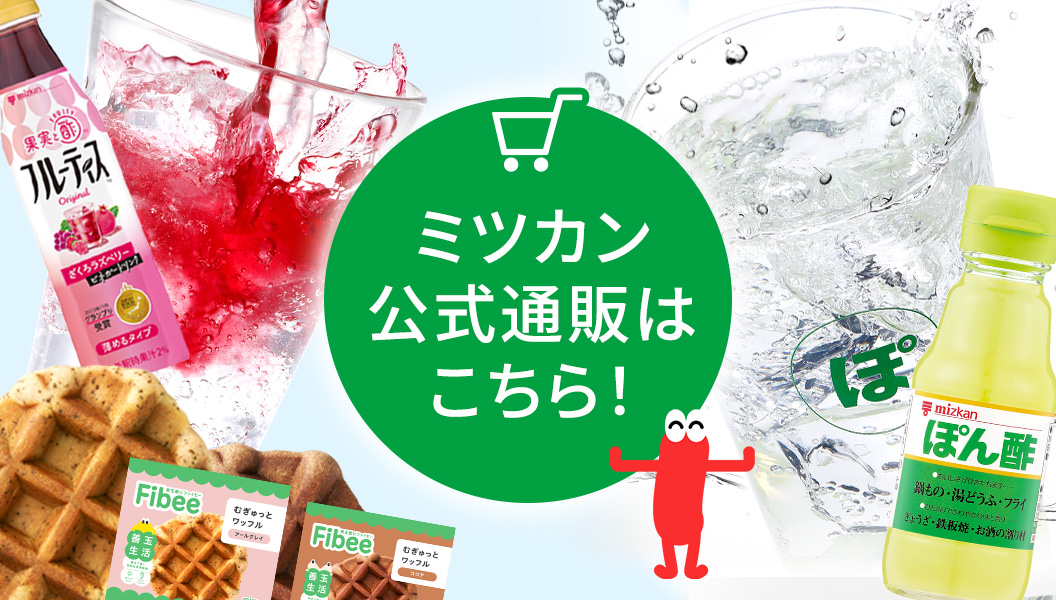
For many centuries in Japan, fish was preserved by fermenting it in rice which was later discarded. This fermented sushi could take years to make, and there were two styles. One was kirimi sushi (sliced-fish sushi), in which the fish was cut into pieces, mixed with rice, and fermented. The other one was sugata sushi (fish-shaped sushi), in which the entire fish was fermented in rice.
Later, in the mid-Edo period, vinegared rice was introduced and fermented sushi evolved into haya sushi (fast sushi). Haya sushi did not take nearly as long to make, and the vinegared rice was eaten along with the fish. With the introduction of haya sushi, kirimi sushi branched off into Hako Sushi (boxed sushi) and chirashi sushi (scattered sushi), while sugata sushi branched off into maki sushi (rolled sushi) and Inari sushi. All these varieties are available and still eaten today.


To make hako sushi (boxed sushi), vinegared rice topped with slices of fish is packed and pressed into a box. At first, only raw fish was used for hako sushi, but later, other ingredients, such as simmered vegetables, became common as well. The boxes also varied widely in size, from very large to very small.
Osaka is particularly well known for its hako sushi. In the mid-Edo period, the number and variation of toppings increased there, and sushi chefs began to press the sushi with their hands instead of a weight. In the Meiji period, hako sushi in square containers (approximately 8.5㎠) became popular, filled with vinegared rice topped with neatly arranged mackerel, conger eel, and rolled omelette.
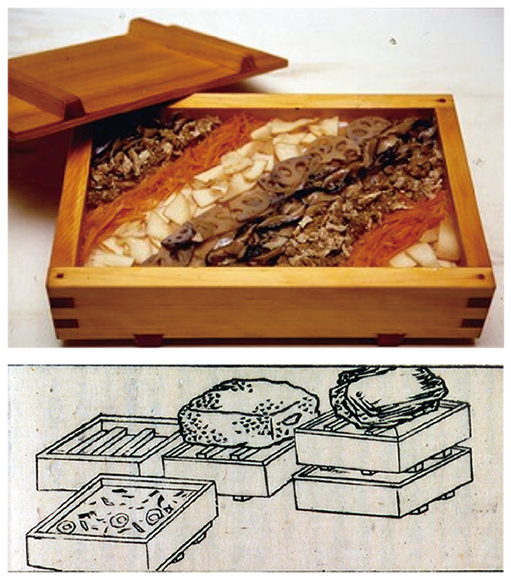
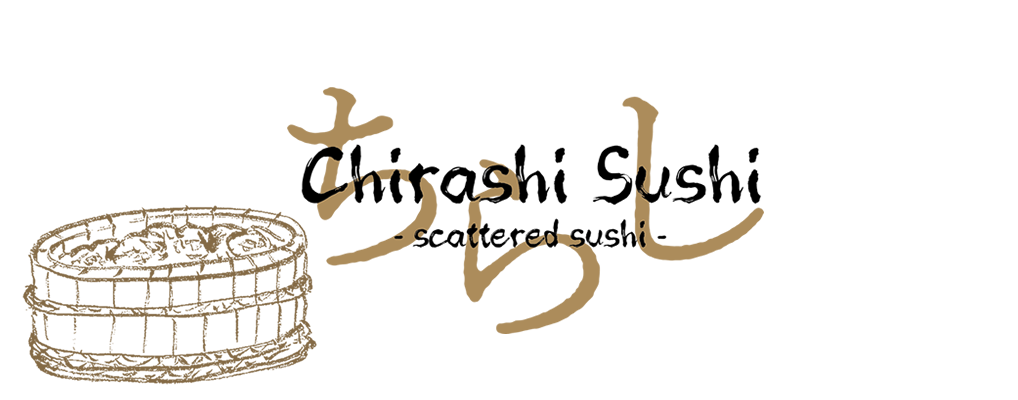
A late-Edo period cookbook, Collection of Famous Grain Dishes (Meihan Burui) published in 1802, featured two varieties of sushi: okoshi sushi and sukui sushi. Both were made by mixing vinegared rice and other ingredients together, before carefully packing the mixture into a box and pressing it under a stone weight. The sushi was eaten by scooping (‘okosu’ or ‘sukū’ in Japanese) it out of the box with a spatula-like spoon.
These boxes of sushi were normally served at banquets during the Edo period, and the guests were invariably men. They had to scoop their own sushi, but it wasn’t easy because the men were usually quite drunk. By the time the carefully pressed sushi made it onto their plates, it had often turned into a complete mess. People began to ask, “Why press it at all?” This resulted in the creation of chirashi sushi (scattered sushi)—the only sushi which isn’t pressed into shape. Chirashi sushi is considered the easiest sushi variety to prepare: delicious when made with simple ingredients, and even better when made with premium ones.
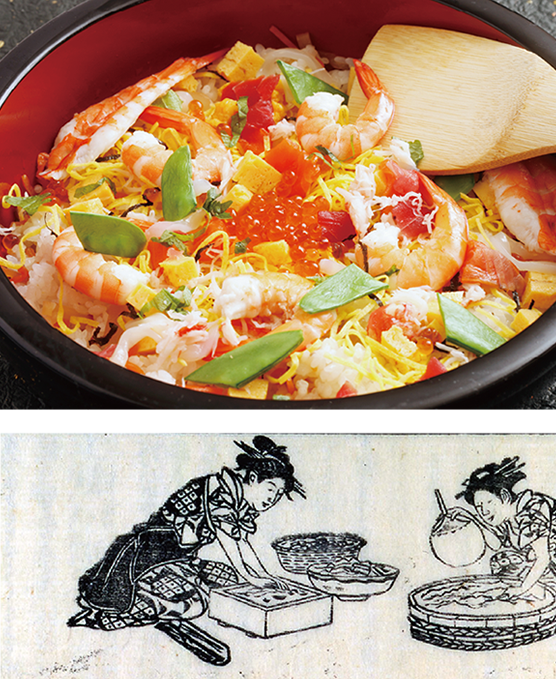

One day in the mid-Edo period, a customer was drinking alone on the second floor of a restaurant in Edo (Tokyo). Perhaps he had drunk one too many cups of sake, because he suddenly exclaimed, “I’m bored with all the dishes you serve here. Give me something I’ve never eaten before! Take this mackerel sushi for example. Why don’t you turn it upside down or something?”
He may have been drunk, but he was still a customer after all, so the restaurant’s chef gave his demand a lot of thought. Instead of just wrapping the fish around the rice, he tried slicing the mackerel into a long thin piece, pressed rice all around it, and then cut the resulting roll into rings. However, the customer’s hands would get all sticky because the rice was on the outside, so he tried wrapping it with either paper or fish skin. This created another problem, since the customer would have to remove this wrapping from their mouth after each bite. So, the chef thought, “What if I wrapped the sushi in something edible...?”
This is how maki sushi (rolled sushi) was created. It eventually spread throughout the whole of Japan, with the wrapping varying from region to region. For example, coastal areas used seaweed and kelp, while mountainous areas used pickled takana mustard leaves. The ingredients used inside maki sushi also expanded beyond fish to include rolled omelette, and vegetarian options such as kanpyo (gourd strips), carrot, etc.
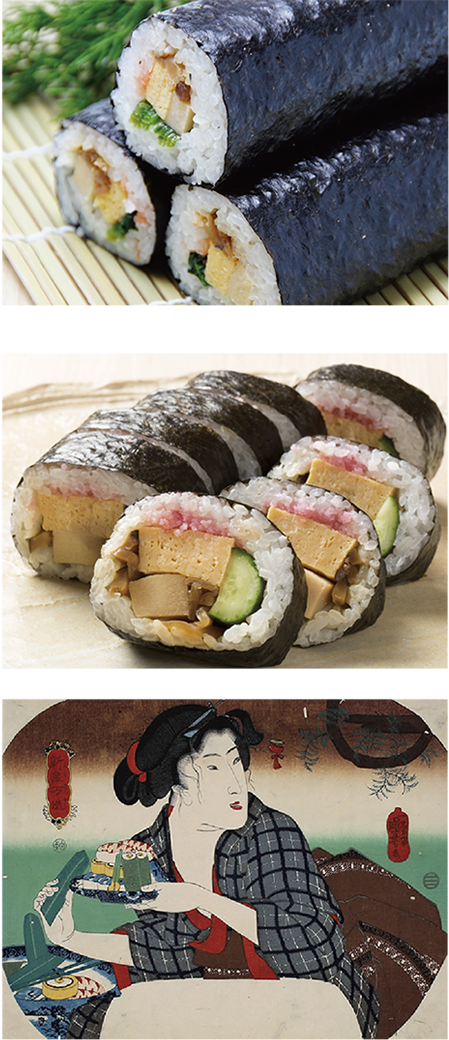

Inari sushi is a type of sushi in which vinegared rice is stuffed into a sweet and savoury abura-age (a deep-fried tofu pouch). When it first appeared in the late-Edo period, it was cut to order from one large piece just before it was sold.
At the time, Inari sushi was not very popular among regular sushi restaurants because the fried tofu left an oily residue on the hands. Another possible reason was that sushi chefs wanted to imply that their sushi was on a completely different level than the much cheaper Inari sushi.
